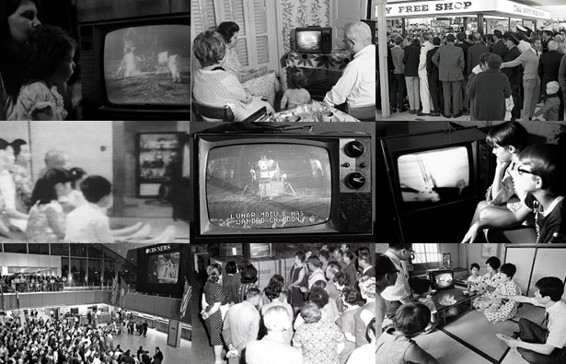

The moon landing captivated the world, but it’s time we do something even greater.
“Sending Americans back to the moon would be a waste of time.”
This is what Buzz Aldrin said recently in response to an interview question asked by a couple of teenage actors from the science-fiction film Earth to Echo. Instead, the second man to ever walk on the moon told the young movie stars that establishing a human colony on Mars should be our top priority. And he’s not alone in thinking so.
Mars One — a Dutch non-profit organization — is currently in the planning stages for a Mars exploration mission that will not only put four people on a Mars colony, but will also televise the entire process on a reality television show. Every step of the crew’s journey, from their astronaut training all the way to them actually living on the red planet, will be available for the entire world to see on TV. If everything goes according to plan, the first colonists to arrive on Mars are expected to land in the year 2023.
Colonizing Mars won’t be easy, but Mars One believes that by building upon current technologies, establishing a permanent settlement is entirely possible. The group is currently raising money for their first unmanned mission in 2018 which will demonstrate hardware from the Mission Concept Studies by Lockheed Martin and Surrey Satellite Technology LTD (SSTL). While no human will be on board the mission, it’s the first step in creating a habitable outpost.
The 2018 launch will consist of a private lander built by Lockheed Martin and a communications satellite built by SSTL. The lander is based on the successful version used in the 2007 NASA Phoenix mission and will use the satellite to provide a high bandwidth communications platform. With the two working in conjunction, data and video will be relayed back to Earth for the Mars One team to provide proof that their concept and technologies can assist a human mission.
Mars One Roadmap:
- 2013 – Start Crew Selection
- 2015 – Start of Crew Training
- 2018 – Demo & Comsat Mission
- 2020 – Rover Mission Launched
- 2022 – Cargo Mission Launched
- 2023 – Outpost Operational
- 2024 – Departure of Crew One
- 2026 – Departure of Crew Two
“It is not necessary to have military training nor experience in flying aircraft nor even a science degree. It is most important that each applicant be intelligent, in good mental and physical health, and be willing to dedicate eight years to training and learning before making the journey to his or her new home on Mars.”
–Mars One Press Release
As the 45th anniversary of Buzz Aldrin and his Apollo 11 mission approaches, moon exploration is something that hasn’t been in the public conscious for many years. The last time a human walked on the moon was in 1972 and NASA hasn’t made any great strides in getting us back there. In fact, they haven’t even ventured above low Earth orbit since then. While this can be blamed largely on budget cuts (Apollo 18, 19 and 20 launches were scrapped due to high costs), public interest has also waned over the years. Finding ways to live on Mars, however, is something that NASA has also been tinkering with.
With their recent successful launch of a flying saucer-like rocket that tested a safe way to land on Mars, NASA has demonstrated that it is entirely possible for a human to get there without harm. Theoretically, NASA can send a human to Mars today, but living there is a whole different story. And that’s where Mars One separates themselves from NASA – they actually have a plan.
Once the astronauts arrive on Mars, they will live on an inflatable settlement which contains bedrooms, working areas, a living room and a “plant production unit” where they will grow food. They’ll have showers, wear regular clothes, and live their lives much in the same way they would here on Earth. Mars One also says the settlement will be roomy and measure over 2,000 square feet. The journey won’t be easy, but it seems like Mars’ first human inhabitants will be living a life of luxury by space standards.
If landing on the moon was “one giant leap for mankind,” living on Mars will be the greatest achievement of all time. And much like how the moon landing captivated and united entire nations, I believe the Mars One mission can also inspire future generations to do even greater things. I may not want to be one of the four astronauts that never come back to Earth, but I will be one of billions of people that will surely watch them on TV. Will you?








